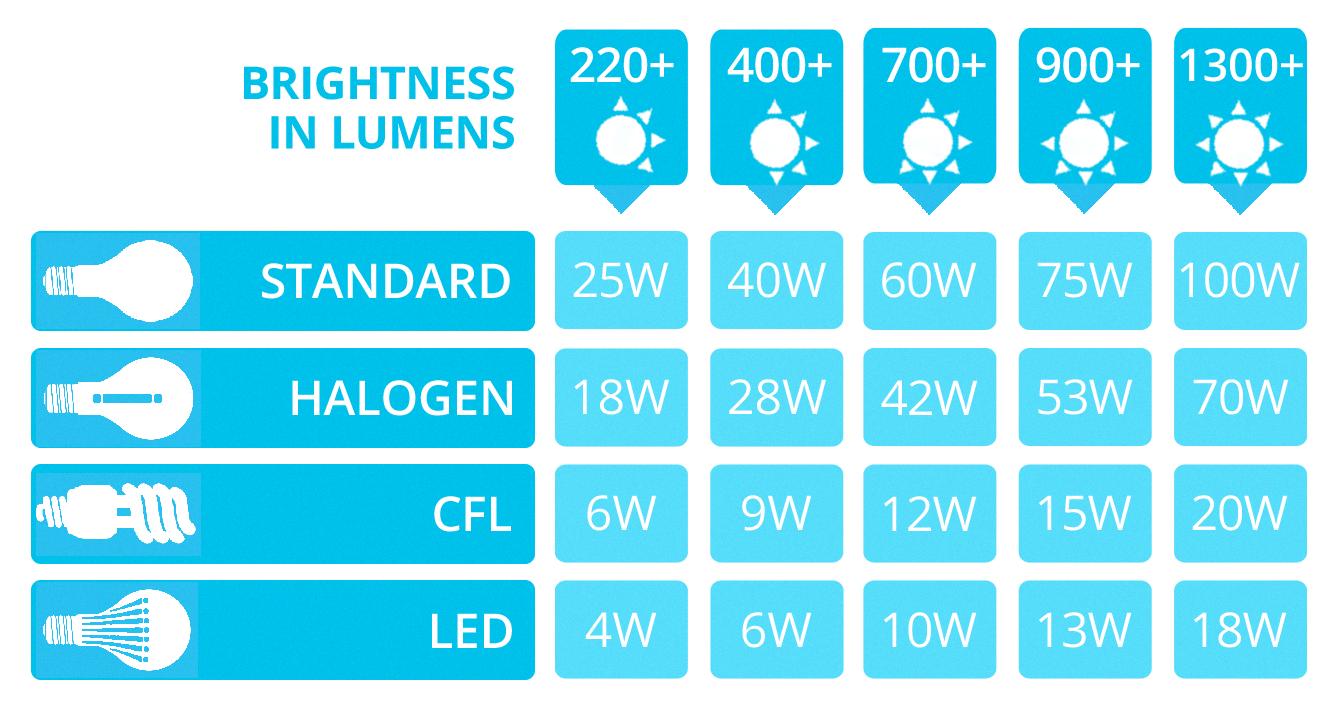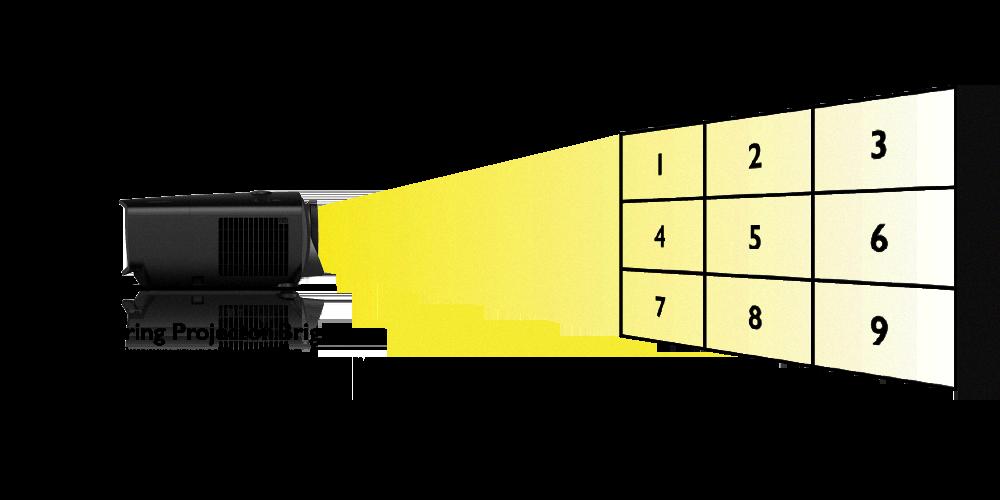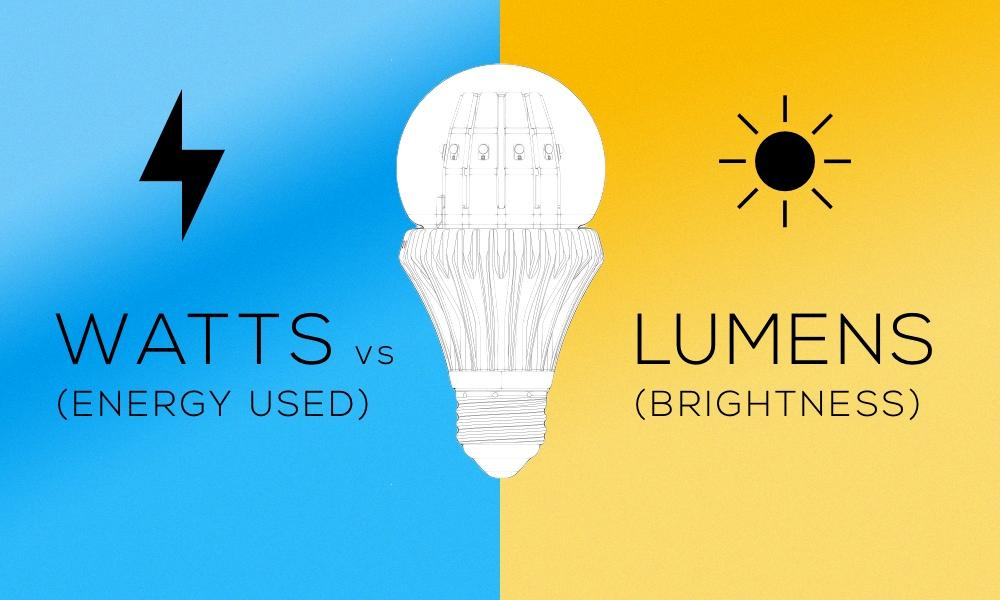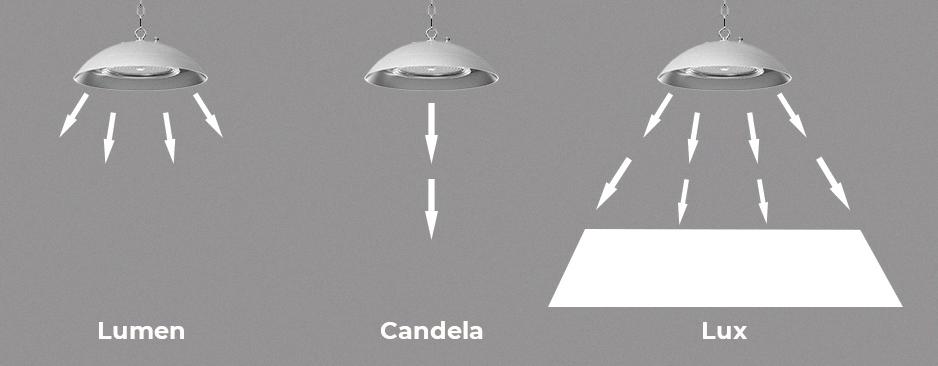As we all know, lighting plays a crucial role in creating a comfortable and functional space. Whether it’s in our homes or commercial properties, the amount of light we have can affect our mood, productivity, and even safety. That’s why it’s essential to understand how much light we need in a partcular area, and in this article, we’re going to focus on 1000 lumens.
First, let’s define what a lumen is. A lumen is a measure of the total amount of visible light emitted by a light source. In other words, it’s a unit of brightness. The higher the number of lumens, the brighter the light will be.
Now, the question is, how bright is 1000 lumens? The answer depends on several factors, such as the size of the space you want to light up and the purpose of the lighting. Generally speaking, 1000 lumens is considered sufficient for low-light level areas such as living rooms and lounge areas. It provides enough light to see and move around comfortably, but it’s not overly bright that it hurts the eyes.
On the other hand, task-oriented spaces such as kitchens, home offices, and workshops may require up to 3000 lumens or more. These areas require more light to perform specific tasks such as cooking, reading, or working on projects.
To give you a better idea of how much light 1000 lumens can provide, let’s compare it to different types of bulbs. An incandescent bulb that emits 200-300 lumens usually requires 25-30 watts, while a halogen bulb that emits 1000-1250 lumens requires 100 watts. A CFL bulb that emits 1000-1250 lumens only requires 20 watts, making it more energy-efficient than incandescent and halogen bulbs. Lastly, an LED bulb that emits 1000-1250 lumens only requires 10-13 watts, making it the most energy-efficient option.
It’s also essential to consider the relationship between lumens and lux. Lux is a measure of illuminance, which is the amount of light that falls on a surface. One thousand lumens, concentrated into an area of one square meter, produces an illuminance level of 1000 lux. However, the same 1000 lumens, spread out over ten square meters, only produces an illuminance level of 100 lux. This means that the same amount of light can have different effects depending on how it’s distributed.
1000 lumens is considered sufficient for low-light level areas such as living rooms and lounge areas. However, it’s essential to consider the size of the space and the purpose of the lighting when determining how much light is needed. Additionally, the type of bulb used can affect how much energy is required to produce the desired amount of light.
Is 1000 Lumens Sufficient to Illuminate a Room?
When it comes to lighting a room, the amount of lumens required depends on the size of the space and the purpose of the lighting. A general rule of thumb is that for every 100 square feet of space, 1000 lumens of light is sufficient for low-light level areas such as living rooms and lounge areas.
To put this into perspective, a 100 square feet room would require around 1000 lumens of light to be considered adequately lit. However, it’s important to note that this is just a general guideline and the actual amount of light required may vary depending on factors such as the height of the ceiling and the color of the walls.
If the room is a task-oriented space such as a kitchen or home office, you may need to increase the amount of light to up to 3000 lumens or more. This is because tese spaces require more focused, brighter lighting to help you perform tasks such as cooking, reading or working.
1000 lumens can be considered bright enough for a room, provided that the room is a low-light level area such as a living room. However, for task-oriented spaces, you may need to increase the amount of light to up to 3000 lumens or more.

Source: thelightbulb.co.uk
Converting 1000 Lumens to Watts
Lumens and watts are two different units of measurement that are often used to describe the brightness of light bulbs. Lumens measure the amount of light that is emitted by a bulb, while watts measure the amount of energy that is used by a bulb. Therefore, it is not possible to directly convert lumens to watts or vice versa.
However, there are some general guidelines that can be used to estimate the wattage of a bulb based on its lumens output. For example, a 1000-1250 lumens bulb is typically equivalent in brightness to a 75-100 watt incandescent bulb. This means that if you are looking for a bulb that provides the same level of brightness as a 1000 lumens bulb, you shuld look for a bulb that uses approximately 75-100 watts of power.
It is worth noting that the brightness of a bulb can also be affected by factors such as its color temperature and beam angle. Bulbs with a higher color temperature (measured in Kelvin) will produce a cooler, bluer light, while bulbs with a lower color temperature will produce a warmer, more yellow light. The beam angle of a bulb can also affect its brightness, with bulbs that have a wider beam angle producing more diffuse light that is spread over a larger area.
While it is not possible to directly convert lumens to watts, a 1000 lumens bulb is typically equivalent in brightness to a 75-100 watt incandescent bulb. However, other factors such as color temperature and beam angle can also affect the perceived brightness of a bulb.
How Bright Is Considered Many Lumens?
When it comes to determining the brightness of outdoor lighting, lumens are the unit of measurement used. A lumen is a measure of the total amount of visible light emitted by a source. The higher the number of lumens, the brighter the light source.
For walkways and commercial properties, 80 lumens are generally considered bright enough to provide adequate lighting. This level of brightness helps to ensure that people can safely navigate the area without any difficulty.
However, for garden lights used as accent lighting, a lower level of brightness is generally sufficient. Around 50 lumens can provide enough light to add interest, dimension, and color to your yard wile also ensuring a level of safety.
It’s important to note that the level of brightness required may vary depending on the specific location and purpose of the outdoor lighting. Factors such as the size of the area and the level of ambient light can also impact the necessary level of brightness.
80 lumens are considered bright enough for walkways and commercial properties, while 50 lumens are generally sufficient for garden lights used as accent lighting. However, the required level of brightness may vary depending on several factors, and it’s essential to consider these factors when determining the appropriate level of lumens for your outdoor lighting needs.
How Bright Is a 1000 Lumen Ceiling Light?
When it comes to measuring the brightness of a ceiling light, the unit of measurement used is lumens. Lumens is a measure of the total amount of light emitted by a light source. To put it simply, the higher the lumens, the brighter the light.
So, how bright is 1000 lumens in a ceiling light? To answer this question, we need to consider the concept of illuminance, wich is the amount of light that falls on a surface per unit area. Illuminance is measured in lux.
If 1000 lumens are concentrated into an area of one square metre, it produces an illuminance level of 1000 lux. This means that one square metre of the surface directly under the light will be illuminated with an illuminance level of 1000 lux.
However, if the same 1000 lumens are spread out over a larger area, the illuminance level will decrease. For example, if the 1000 lumens are spread out over ten square metres, the illuminance level will be only 100 lux. This means that the same amount of light will be spread out over a larger area, resulting in a less intense brightness.
The brightness of 1000 lumens in a ceiling light depends on how the light is distributed. If the light is concentrated in a small area, it will be very bright. However, if the light is spread out over a larger area, the brightness will be less intense.
How Far Can 1000 Lumens Reach?
A flashlight with a 1000 lumen output is considered to be quite powerful and can provide a significant amount of light to illuminate objects in the dark. The distance that 1000 lumens can be seen, however, largely depends on a number of factors, including the design of the flashlight and the environment in which it is used.
Assuming that the flashlight has a well-designed lens or reflector, it is possible for a 1000 lumen flashlight to illuminate objects up to 200 meters or more. This means that at a distance of 200 meters, the light from the flashlight will be strong enough to allow you to see objects in the dark.
It should be noted, however, that the brightness of the flashlight may be affected by othr factors, such as the weather conditions, the presence of obstacles or other sources of light, and the battery life of the flashlight. In addition, the beam pattern of the flashlight can also affect its range and visibility.
A 1000 lumen flashlight can provide a significant amount of light and can be useful in a variety of settings, from camping and hiking to emergency situations and home security. When choosing a flashlight, it is important to consider the factors that can affect its performance and to choose a model that is well-designed and reliable.

Source: benq.com
How Many Lumens Are Needed For a 12×12 Room?
When it comes to lighting up a 12×12 room, the number of lumens required can vary depending on the purpose of the room and personal preference. However, as a general rule of thumb, it is recommended to have around 1,440 to 2,880 lumens for a 12×12 room.
To break it down further, if the room is a sitting room or a bedroom, it will generally require around 10-20 lumens per square foot. Therefore, for a 12×12 room, whih has an area of 144 square feet, the total lumens required would be between 1,440 and 2,880 lumens.
On the other hand, if the room is a bathroom or a kitchen, it will need a stronger level of lighting, at around 70-80 lumens per square foot. Hence, for a 12×12 bathroom or kitchen, which also has an area of 144 square feet, the total lumens required would be between 10,080 and 11,520 lumens.
It is important to note that these are just general guidelines and personal preferences and the purpose of the room can influence the amount of lumens required. Additionally, the type of lighting fixtures and their placement can also impact the brightness of the room.
How Many Lumens Does a 60-Watt Bulb Have?
A 60-watt incandescent bulb typically produces about 800 lumens of light. Lumens are a unit of measurement used to quantify the amount of visible light emitted by a source. In other words, lumens measure brightness. It’s worth noting that the same amount of brightness can be achieved with less power consumption by using more energy-efficient lighting options such as LED (light-emitting diode) bulbs. An LED bulb producing the same 800 lumens of light as a 60-watt incandescent bulb would only use about 9 watts of power. So, while a 60-watt bulb may produce a cetain amount of brightness, there are more energy-efficient options available that can produce the same amount of brightness while using less power.
How Many Lumens Are in a 40-Watt Bulb?
When it comes to measuring the brightness of light bulbs, lumens are the universal metric used for this purpose. A 40-watt bulb, which is a relatively low wattage bulb, produces approximately 450 lumens of light. This implies that the higher the wattage of a bulb, the greater the amount of lumens it will produce.
It’s essential to note that lumens are a more accurate measure of light output than wattage. Wattage refers to the amount of energy a bulb uses, while lumens inicate the amount of light the bulb produces. Therefore, it’s possible to find two bulbs with the same wattage but different lumens output.
For household use, a 60-watt bulb is the most commonly used light bulb, and it produces about 800 lumens of light. However, with the development of LED bulbs, it’s now possible to find bulbs that produce the same amount of light with less wattage. For example, a 10-watt LED bulb can produce the same amount of light as a 60-watt incandescent bulb.
A 40-watt bulb produces approximately 450 lumens of light, and lumens are a more accurate measure of light output than wattage.
What LED Bulb is Equivalent to a 60 Watt Incandescent Bulb?
If you are looking for an LED bulb that can replace a 60-watt incandescent light bulb, then you need to look for an LED bulb with a wattage of around 10 watts. This is because LED bulbs are much more energy-efficient than incandescent bulbs, and they can produce the same amount of light using much less power.
When shopping for LED bulbs, you should also pay attention to the brightness level. The brightness of an LED bulb is measured in lumens, and you can find this information on the packaging or product description. A 60-watt incandescent bulb typically produces around 800 lumens, so you should look for an LED bulb with a similar brightness level.
Another factor to consier when choosing an LED bulb is the color temperature. LED bulbs are available in a range of color temperatures, from warm white to cool white. The color temperature is measured in Kelvin (K), and a bulb with a lower Kelvin rating will produce a warmer, more yellowish light, while a bulb with a higher Kelvin rating will produce a cooler, bluish light.
If you are looking for an LED bulb that can replace a 60-watt incandescent light bulb, look for an LED bulb with a wattage of around 10 watts, a brightness level of around 800 lumens, and a color temperature that suits your preferences.

Source: blog.lightupnashville.com
Is a 1500 Lumen Light Too Bright?
When it coes to flashlights, the brightness of the beam is measured in lumens. The more lumens a flashlight has, the brighter its beam will be. A 1500 lumen LED flashlight is considered very bright and powerful, and it can be suitable for most tasks.
However, whether or not 1500 lumens is too bright for a particular task depends on various factors. For example, if you are using the flashlight in a dark room or a dimly lit area, 1500 lumens may be too bright and could cause discomfort or temporarily impair your vision.
On the other hand, if you are using the flashlight outdoors, in a large open space, or for search and rescue purposes, 1500 lumens may be necessary to provide enough illumination for the task at hand.
In general, it is important to consider the specific use case when selecting a flashlight with a particular lumen rating. Additionally, some flashlights may have adjustable brightness settings, allowing you to customize the brightness of the beam to suit your needs.
A 1500 lumen LED flashlight is a powerful tool that can be suitable for a wide range of tasks, but it is important to use it appropriately to avoid discomfort or vision impairment.
How Many Lumens Are in a Sunny Day?
A sunny day can vary in brightness depending on the location and time of day. However, generally speaking, the brightness of a sunny day can range from around 1,000 lumens in the shade to over 6,000 lumens on a large, reflective surface such as a highway.
To give some context, the average indoor lighting is around 100-500 lumens and a typical car headlight can produce up to 1,500 lumens. Our eyes are comfortable with a brightness level of around 3,500 lumens, wich is why a sunny day can sometimes be uncomfortable to look at directly.
It’s important to note that lumens measure the amount of visible light emitted by a source, rather than the intensity of the light. Therefore, while a sunny day may be bright in terms of lumens, it may not necessarily be intense enough to cause damage to your eyes.
A sunny day can range from around 1,000 to 6,000 lumens, with an average of 3,500 lumens being comfortable for our eyes.
Is 800 Lumens Sufficient to Illuminate a Room?
When it coes to lighting a room, 800 lumens can be enough depending on the size of the room and what the room is used for. A single 800-lumen bulb is suitable for lighting a small room or a specific area within a larger room. However, if you’re trying to light up an entire room, you may need more than one 800-lumen bulb.
It’s important to note that the brightness of a light bulb is not the only factor to consider when lighting a room. The color temperature of the light, also known as the Kelvin (K) rating, can also affect the overall feel of a room. For example, a warmer, yellowish light (around 2700K) can create a cozy and comfortable atmosphere, while a cooler, bluer light (around 5000K) can make a room feel brighter and more energizing.
In addition to the brightness and color temperature of the bulbs, the placement of the lights in the room is also important. A well-lit room should have multiple light sources, such as floor lamps, table lamps, and overhead lights, placed strategically around the room to eliminate any dark corners or shadows.
While 800 lumens can be enough to light a room, it’s important to consider the size of the room, the purpose of the room, and the placement of the lights in order to create a well-lit and comfortable environment.
How Many Lumens Are Needed to Brighten a Room?
When it comes to brightening a room, the number of lumens required depends on the size of the room and the desired level of brightness, wich is measured in foot-candles. A foot-candle is the amount of light that falls on a one-square-foot surface located one foot away from a single candle.
To calculate the number of lumens needed to brighten a room, you need to know the square footage of the room and the foot-candle requirement. The foot-candle requirement varies depending on the room’s function and the level of brightness desired. For example, a living room may require 20 foot-candles for comfortable reading, while a kitchen may require 50 foot-candles for food preparation.
To determine the number of lumens required for a specific room, multiply the room’s square footage by the foot-candle requirement. For instance, a 100 square-foot living room that needs 20 foot-candles will require 2,000 lumens. Similarly, a 200 square-foot kitchen that requires 50 foot-candles will need 10,000 lumens.
It’s important to note that the color of the walls and ceiling, as well as the type of light fixture used, can also affect the brightness of a room. It’s recommended to consult with a lighting professional to ensure that the appropriate level of brightness is achieved for each room’s specific needs.

Source: agcled.com
Lumens in a Car Headlight
Car headlights come in different types, and they also vary in brightness, which is measured in lumens. The three most common types of headlights are halogen, high-intensity discharge (HID), and LED.
Halogen headlights typically have a brightness of 700 to 1,200 lumens. They are the most common type of headlights and are often found in older cars.
HID headlights, on the oter hand, have a much higher brightness, ranging from 3,000 to 5,500 lumens. They are more energy-efficient than halogen headlights and produce a brighter light that can illuminate more of the road ahead.
LED headlights also have a high brightness, ranging from 3,000 to 6,000 lumens. They are the most energy-efficient type of headlights and offer a longer lifespan compared to halogen and HID headlights.
The number of lumens in a car headlight depends on the type of headlight. Halogen headlights typically have 700 to 1,200 lumens, HID headlights have 3,000 to 5,500 lumens, and LED headlights have 3,000 to 6,000 lumens.
How Bright Is a LED Light Measured In Lumens?
When it comes to the brightness of LED lights, the number of lumens is the key factor to consider. Lumens are a measure of the total amount of visible light emitted by a light source. The higher the number of lumens, the brighter the light.
A bright LED light usualy has a luminous efficacy of 75-110 lumens per watt. This means that for every watt of power consumed by the LED, it can produce between 75 to 110 lumens of light output.
To put this into perspective, a typical 60-watt incandescent bulb produces around 800 lumens of light output. In contrast, an LED light with a luminous efficacy of 75 lumens per watt would only require around 10 watts of power to produce the same amount of light output.
It’s worth noting that the number of lumens required for a “bright” LED light will depend on the intended use and personal preference. For example, a 1000 lumen LED light may be considered bright for general home use, but for commercial or outdoor lighting, a much higher lumen output may be required.
A bright LED light usually has a luminous efficacy of 75-110 lumens per watt, but the required number of lumens will vary depending on the intended use.
Conclusion
After analyzing the infrmation presented in this article, it is clear that 1000 lumens is a significant amount of brightness. For low-light level areas such as living rooms and lounge areas, 1000 lumens is sufficient for every 100 square feet. However, for task-oriented spaces such as kitchens and offices, up to 3000 lumens or more may be necessary.
In terms of outdoor lighting, 80 lumens is considered bright enough for most walkways, while 50 lumens is generally sufficient for garden lights used as accent lighting.
It is important to note that the brightness level of 1000 lumens is not a one-size-fits-all solution. The amount of brightness needed will depend on the specific space and purpose of the lighting.
1000 lumens is a bright and powerful level of illumination that can provide ample lighting for a variety of indoor and outdoor spaces.
